A Review of Richard Dawkins' The God Delusion Part IX
Listen to the MP3
Oct 26, 2007, Wausau, Wi — In the last installment of my review of Richard Dawkins’, “The God Delusion” I looked at Dawkins’ attempted refutation of Aquinas arguments for the existence of God how some of the recent discoveries in science have put atheists like Dawkins in paradox when it comes to the definition of natural and supernatural. But there are even more problems with Dawkins’ attempted refutation of Aquinas arguments.
To summarize (and simplify), Aquinas had argued that an infinite sequence of linked events such as cause and effects was impossible and since the natural world is based on such linked events, there must have been something such as a first cause, to have starting the whole process going in the first place.
In many respects the theory of the Big Bang confirms Aquinas as it shows that there was in fact a beginning to the universe, that the chain of sequences we see all around us did have a beginning. This is perhaps why Dawkins does not try, as some have to avoid this argument by claiming that infinite regression is in fact possible.
Instead, as we cited last time, Dawkins uses the example of cutting gold in half, again and again. Eventually you reach a single atom. If you cut the atom into pieces you no longer have gold. Thus the atom is a natural terminator to the sequence, and since this sequence has a natural terminator, Aquinas’ regression might also have a natural terminator.
Again, there are many problems with Dawkins’ argument. Perhaps the most surprising is that this argument actually parallels Aquinas’, as key for Aquinas is that infinite regression is impossible, and to refute it Dawkins cites a regression that does not go on forever.
While Dawkins does this to claim that Aquinas’ first cause might be natural, there is a major problem. Aquinas’ arguments are based on things that are inherently linked, such as cause and effect where one is depended in some fashion on the other. A chicken comes from an egg. No egg, No chicken. The egg came from an earlier chicken, no earlier chicken no egg. And so on and so on.
Yet the sequence that Dawkins cites has no such link. If you have a piece of gold there is no way to tell if it was cut from a large piece or made by combining smaller pieces. In short, there is no inherent link between a piece of gold and cutting, in the way that there is between chicken and an egg.
Thus the sequence that Dawkins cites to try and refute Aquinas is a completely different type of sequence than Aquinas was referring to. Another way to look at this is to see that that a block of gold is made up of smaller pieces of down to a single atom of gold. While it may be divided in a series of cuts, down to a single atom, even as a block of gold, it still exists as group of atoms. Any sequence of dividing the block happens only as we may choose to cut it.
The sequences that Aquinas was referring to were truly sequential, with each step depending on the ones before it. A chicken cannot be fully grown and still in its egg at the same time. It is in its egg before it can hatch, it must hatch before it can grow to maturity, it must grow to maturity before it can lay other eggs. If this was the same type of sequence as Dawkins, then the all could and would exist simultaneously. So Dawkins supposed refutation seem to have completely missed its mark, and actually provides some support for Aquinas.
Much the same can be said for many of the other arguments in this chapter. While Dawkins does ok on some of the weaker less convincing arguments for God’s existence, on the stronger arguments, it is hard to take Dawkins’ refutation seriously, for his simplistic approach to the subject means that he does not take these arguments seriously and therefore, as with these arguments from Aquinas, fails to really address them.
However, this may not be totally his fault. After the philosophers of the 17th and 18th century, these arguments were considered to have little more than historical importance and were not taken seriously, and this is probably what Dawkins was taught in school. As a scientist, he may not be up to date with current philosophical discussions. But over the latter part of the 20th century, philosophers began to realize that the finding of science had undermined the earlier rejection of these arguments. As such they are once again being seriously considered.
So we are still left with the regression of sequences like cause and effect. These cannot go on forever, but must have a beginning, a first cause. This first cause cannot itself be caused, for if it were, it would not be the first. It cannot be part of the natural universe, because if it were it could not then have caused the natural universe. Since time is part of the natural universe, and was created when the universe was created, this first cause must be eternal. And it must be powerful enough to have caused the universe.
Thus Aquinas’ argument still leaves us with an eternal supernatural first cause, powerful enough to have created the entire universe. While not a complete description of God, it is a good start.
This is Elgin Hushbeck, asking you to Consider Christianity: a Faith Based on Fact.

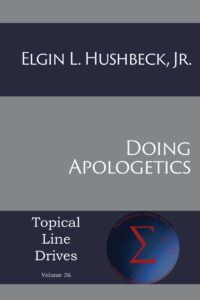
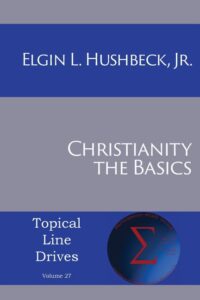
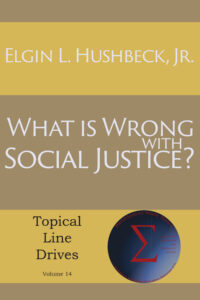
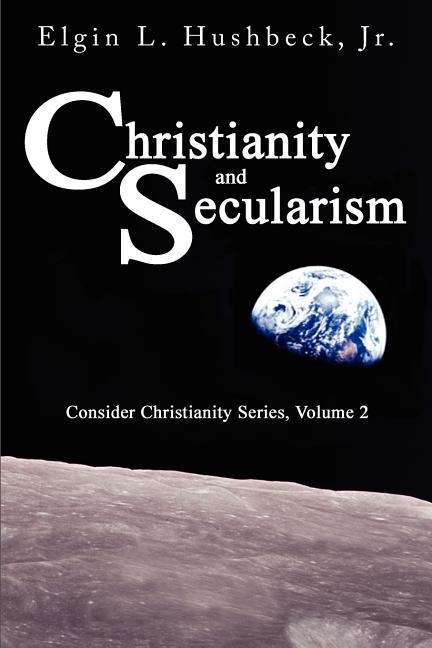
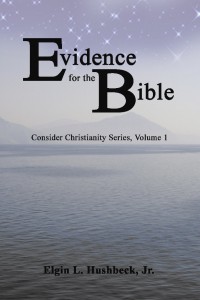
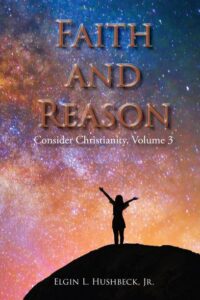
July 13th, 2008 at 11:33 pm
[…] VIII … While not a complete description of God, it is a good start. This is Elgin Hushbeck, …http://www.consider.org/blog/?p=30Read “Re: Free market den of thieves” at Houses of Worship, Religion, Spirituality Forum… agree […]
May 16th, 2009 at 9:00 pm
I like that you saw the fallacy in Dawkins’ use of the “cutting gold,” but I find it somewhat funny that your site headline is “a faith based on fact.” It’s more like “faith based on regressive argumentation.”
October 24th, 2009 at 6:53 pm
Stand up. Take a step. Take another. Keep going in a straight line. Let’s pretend you could keep going, walking through walls, over water, through mountains and trees. If you keep walking long enough you’ll come… right back to where you started. The earth’s surface is an example of a finite by unbounded surface. A “regression of steps” (each preceded, and impossible) without the preceding steps, do not get you back to anything interesting at all – you just go in circles.
I like the distinction you made between gold and chickens. Neat, but not terribly relevant. Wind the clock backwards and chickens go backward (via plenty of eggs) through dinosaurs, through fish, through single-celluar creatures to “simple replicators”. Dawkins does a nice, if not terribly detailed, job of showing how the probability of these replicators coming into existence is not very small after all which then leads us into a whole other regression; where did the goop come from, where did the earth come from, the stars, back to the Big Bang.
Now at this point, by the way, we’ve established that the Bible is not even close to being literally true. The universe is billions of years old, not thousands.
Back to the Big Bang. What is it? Is it a “prime cause” or did something cause it? Or is it just another point on the closed surface of space-time. Is this where the 3-D picture of the 4D world goes wrong (take a look at the 3-D representation of a 4D Kein bottle – ouch!)? If God caused the Big Bang, we have to have some explanation of God. How did he come to exist?
If, however, the universe is, indeed, a closed, self-consistent entity, it doesn’t need a God. If it isn’t a closed entity (the Big Bang plug-hole goes “out” of the universe-bath), then what does the universe exist “in” and what is it made of… that’s a scientific question, not a theological one, I’m afraid. There’s nothing special about our universe – not in principle. There’s no reason to suspect this is the only Universe. There’s no reason to think that science has all the answers – but God as a hypothesis, is extremely weak. This is why I choose to believe God doesn’t exist… much as I choose to believe that the sun will rise tomorrow (it might not, but I’m extremely confident).
I’m sorry some philosophers and theologians have chosen to interpret the Big Bang as Aquinas’ first mover. It isn’t; not by a long-chalk.
October 29th, 2009 at 10:18 am
Mr Easton,
Infinite regression refers to time, not moving on a sphere. While there are those who have suggested the universe expands and collapses in infinite cycles, the evidence is now strongly against such views.
“Now at this point, by the way, we’ve established that the Bible is not even close to being literally true. The universe is billions of years old, not thousands.” And since a very few Christians, even conservative evangelical Christians who believe in an inerrant Bible, believe that the Bible is always to be read literally, you have not demonstrated much. Granted this is a open discussion among Christians. Some are old earth, some young earth. This is more a issue of interpretation than reliability.
As for God, again in the Christian view God is infinite and outside of time, and therefore requires no cause. The same cannot be said for the universe.
“If, however, the universe is, indeed, a closed, self-consistent entity, it doesn’t need a God.” This is a pretty big if and one that is contrary to the evidence.